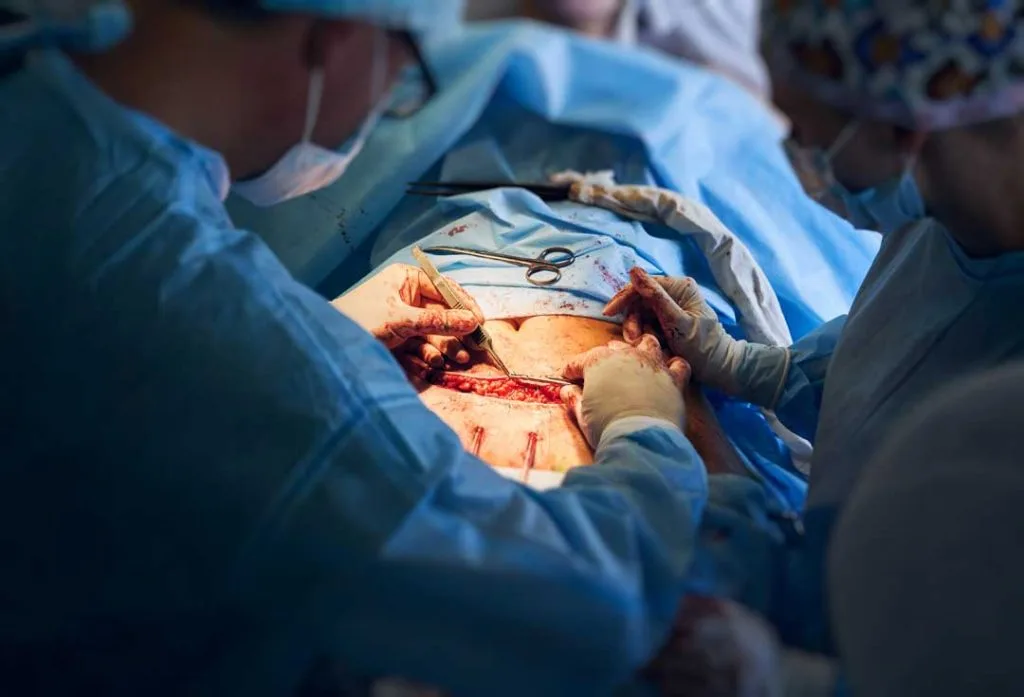Navigating C-section recovery? Know what to truly expect in the days, weeks, and months ahead.

Recovery after a cesarean delivery is often filled with unexpected challenges. Many new moms expect discomfort, but few anticipate just how much patience, care, and time it will take to feel truly like themselves again.
Healing from a C-section involves more than rest and medication. It is a gradual process that requires attention to physical and emotional recovery while adjusting to the demands of caring for a newborn.
What to Really Expect After Your C-Section
The journey of motherhood after a cesarean birth comes with a unique set of healing needs. While many anticipate some discomfort, the reality of C-section recovery often involves a longer and more nuanced process than expected.
This guide will walk new mothers through the foundational first days, crucial wound care, longer-term adjustments, and the often-overlooked emotional aspects of healing after a cesarean delivery.
The First Few Days Are Foundational
The hospital stay usually lasts two to four days after a cesarean, and those early hours matter. Movement is encouraged shortly after delivery to reduce the risk of blood clots, even though it may be painful.

Nurses typically help with the first steps, guiding the body through discomfort that feels both foreign and intense. Pain medication helps, but managing expectations is just as important.
Walking, deep breathing, and gentle leg movements improve circulation and support the body’s early healing efforts.
Wound Care and Signs to Watch
The surgical incision requires close monitoring. Keeping the area clean and dry is critical. Many doctors recommend sponge baths until cleared for showers. Signs of infection such as increased redness, swelling, warmth, or any unusual discharge should be reported to a provider without delay.

Some women are surprised by the tenderness that lingers for weeks. Even something as simple as coughing or laughing can be uncomfortable. Support from abdominal muscles is limited, and every motion feels magnified in the early days.
Longer-Term Recovery and Daily Adjustments
Healing continues for weeks and often months. Lifting anything heavier than the baby is discouraged during the first few weeks. Stairs can be difficult.
Getting in and out of bed takes strategy. Many women benefit from post-op compression garments, which offer support to the abdomen and can reduce discomfort while improving posture during recovery.

These garments may also help with swelling, especially when worn consistently during the first several weeks.
The Emotional Side Deserves Attention Too
C-section recovery brings emotional shifts that are easy to overlook. Some mothers feel disappointment or even guilt if their birth plan did not go as expected. Others experience frustration over their limited mobility. Sleep deprivation and hormonal fluctuations only magnify these feelings.

Support from partners, friends, or professionals makes a difference. Acknowledging emotional struggles is not a sign of weakness. It is a necessary part of postpartum health.
Give Your Body Time Without Pressure
Full recovery from a cesarean can take up to eight weeks or longer, depending on individual health and circumstances. Some women bounce back more quickly, while others need additional time. Neither experience is wrong. Comparing recovery stories often leads to more stress than support. Every healing timeline is different and valid.

The most important thing is not to rush the process. Listen to your body, follow medical guidance, and ask for help. Rest whenever possible, fuel your body with nutritious meals, and accept that healing is not linear.
The path back to strength is slower than many expect, but each day brings you closer. For more information, look over the accompanying resource.
Recovering After a C-Section: A Mother’s Guide
Be patient and kind to yourself during your C-section recovery. Listen to your body’s signals, follow your healthcare provider’s advice, and don’t hesitate to seek support.
Healing takes time and is a personal journey, but with proper care and realistic expectations, you will regain your strength and embrace motherhood fully.

Jessi is the creative mind behind The Coffee Mom, a popular blog that combines parenting advice, travel tips, and a love for all things Disney. As a trusted Disney influencer and passionate storyteller, Jessi’s authentic insights and relatable content resonate with readers worldwide.
